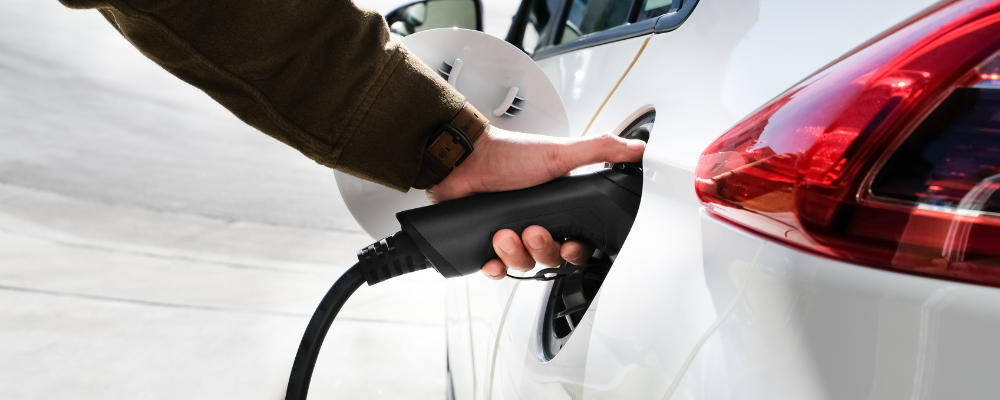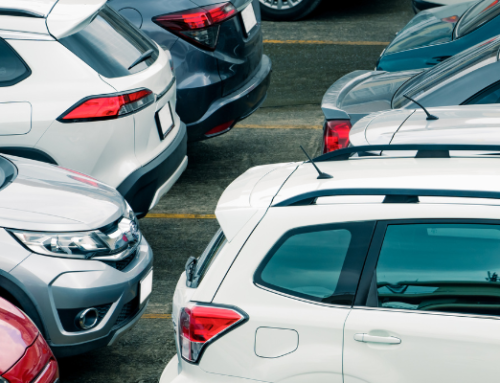Electric vehicles (EVs) are a common sight on our roads. As organisations embrace sustainability, many are installing EV chargers at their sites. While the benefits of electric vehicles are clear, charging them safely is a new area of risk for many organisations. If you manage a facility or plan infrastructure, understanding best practices for EV charging safety is essential. This article sets out the key risks, practical controls, and emerging trends to give you a roadmap to safer, more reliable EV charging.
Why EV Charging Safety Matters
EV chargers are high-voltage appliances. They’re designed to transfer large amounts of energy quickly and efficiently. Like any powerful electrical device, there are risks. Faults can happen. Fires can start. Without the right controls they could quickly become a hazard.
Lithium-ion batteries – the heart of most electric vehicles – are generally safe, but under certain conditions they can fail. Physical impacts, extreme temperatures, charging malfunctions, or simply old age can all cause batteries to overheat or catch fire. When a battery fails, it can release toxic or explosive gases. And because modern cars often contain a lot of plastic, fires can spread rapidly.
The consequences are serious: damage to property, business interruption, increased insurance premiums, and most importantly risks to people. That’s why robust safety measures are a must have.
Location, Location, Location
Where you put your charging stations matters. Well-placed chargers are easier to use, safer, and less likely to cause trouble if something goes wrong.
- Keep your distance: Ideally, charging stations should be at least 10 meters from buildings with combustible materials and 7.5 meters from non-combustible elevations. In tight spaces or residential areas, this might not be possible, that’s okay but make sure you carry out a site-specific risk assessment and consult with our risk engineering team for tailored advice.
- Control access: Use fencing or other barriers to prevent unauthorised access, especially in public areas.
- Space vehicles out: For large commercial sites, leave at least 2 meters between vehicles. In the event of a fire this will slow the spread. In smaller spaces, again, a risk assessment by an expert is recommended.
- Protect the chargers: Install barriers to stop vehicles from accidentally damaging the charging equipment.
- Plan for emergencies: Make sure fire services can easily get to the charging area.
Risk Controls: What You Need to Do
To keep your EV charging stations safe, you’ll need a combination of good design, proper installation, ongoing maintenance, and staff training. Here’s what that looks like:
- Professional installation: Only use certified contractors, such as those accredited by NICEIC, ECA, SAFed, NAPIT, or SELECT. Follow manufacturer guidelines and the IET Code of Practice for Electric Charging Equipment Installation.
- Electrical safety: Install Residual Current Devices (RCDs) so that power is automatically cut if there’s a fault.
- Automatic shutdown: Chargers should turn off automatically if there’s a problem, or if a fire alarm is triggered.
- Manual isolation: Make sure you have a manual isolation point to let you quickly disconnect a charger in an emergency.
- Keep clear of combustibles: Keep a 2-meter radius area around chargers free from waste, vegetation, and other flammable materials.
- Cable management: Use cable holders to keep things tidy and reduce trip hazards.
- Regular maintenance: Schedule periodic checks by certified professionals. Daily visual checks by staff are also a good idea, and weekly or monthly inspections should look for cracks or other damage to both the charger and its base.
- Emergency planning: Develop a plan for what to do in the event of a charger or vehicle fire. Train your staff so they know how to isolate units, shut them down, and implement your emergency procedures to keep people and other assets safe.
- Avoid unattended charging: Try not to charge vehicles when no one is around to spot a problem.
Special Considerations for Enclosed Spaces
Charging EVs in enclosed areas, like underground car parks, introduces extra risks. Fires in these spaces can be harder to detect and fight. If you’re planning to install chargers in these locations, get a detailed risk assessment from a qualified professional. Consider extra fire protection measures, such as sprinklers or fire suppression systems, and ensure there’s enough compartmentation to contain a blaze. Early detection is vital. Good fire alarms and sprinkler systems are your best allies.
Keeping Up with Technology
The world of EV charging is evolving. Here are a few trends to keep an eye on:
- AI-based monitoring: New systems use artificial intelligence to predict faults before they happen, alerting maintenance teams in advance.
- Renewable energy integration: More charging stations are using solar or wind power, cutting costs and promoting sustainability.
- Next-generation charging: Wireless charging, ultra-fast chargers, and better batteries are all on the horizon. These changes could affect both efficiency and safety so stay up to date.
Sometimes Overlooked But Important
Some risks aren’t immediately obvious. Here are a few extras to consider:
- Cyber security: Modern chargers are “smart.” Regularly update software to prevent hacking and other issues.
- Insurance surveys: Your insurer might want to inspect your charging points. Early engagement can identify risks and improve your set-up.
- Thermographic imaging: Use this technology to spot overheating before it becomes a problem.
- Compliance: Be aware of standards and stick to them, like the Institute of Engineering Technology Code of Practice and BS EN 61851-1:2019.
- Record keeping: Log unscheduled downtime and keep good maintenance records.
- Local fire services: Talk to them about charger placement, access, and risk mitigation.
- Insurance: Early conversations with your insurance provider during the design and positioning stages will lead to the best results and help avoid future issues early on.
Quick Reference Tips
Facility Managers:
- Make sure chargers are installed and maintained by certified professionals.
- Stay in close contact with your contractors.
Safety Officers:
- Carry out regular inspections.
- Train staff on emergency and fire safety procedures.
Maintenance Staff:
- Keep up with scheduled maintenance.
- Use thermographic imaging to catch overheating early.
Conclusion
Safe EV charging isn’t just about plugging in and walking away. It’s about planning, vigilance, and teamwork. By following these steps you protect your people, your property, and your investment in a sustainable future. Early consultation with insurance and fire services, along with regular training and maintenance, will ensure your EV charging stations remain an asset rather than a liability. Stay safe, stay charged, and drive into the future with confidence.
We are here to help
Please do get in touch if you would like to know more about how we can support you and your business.
This article was adapted from an article by Zurich which can be found here.






